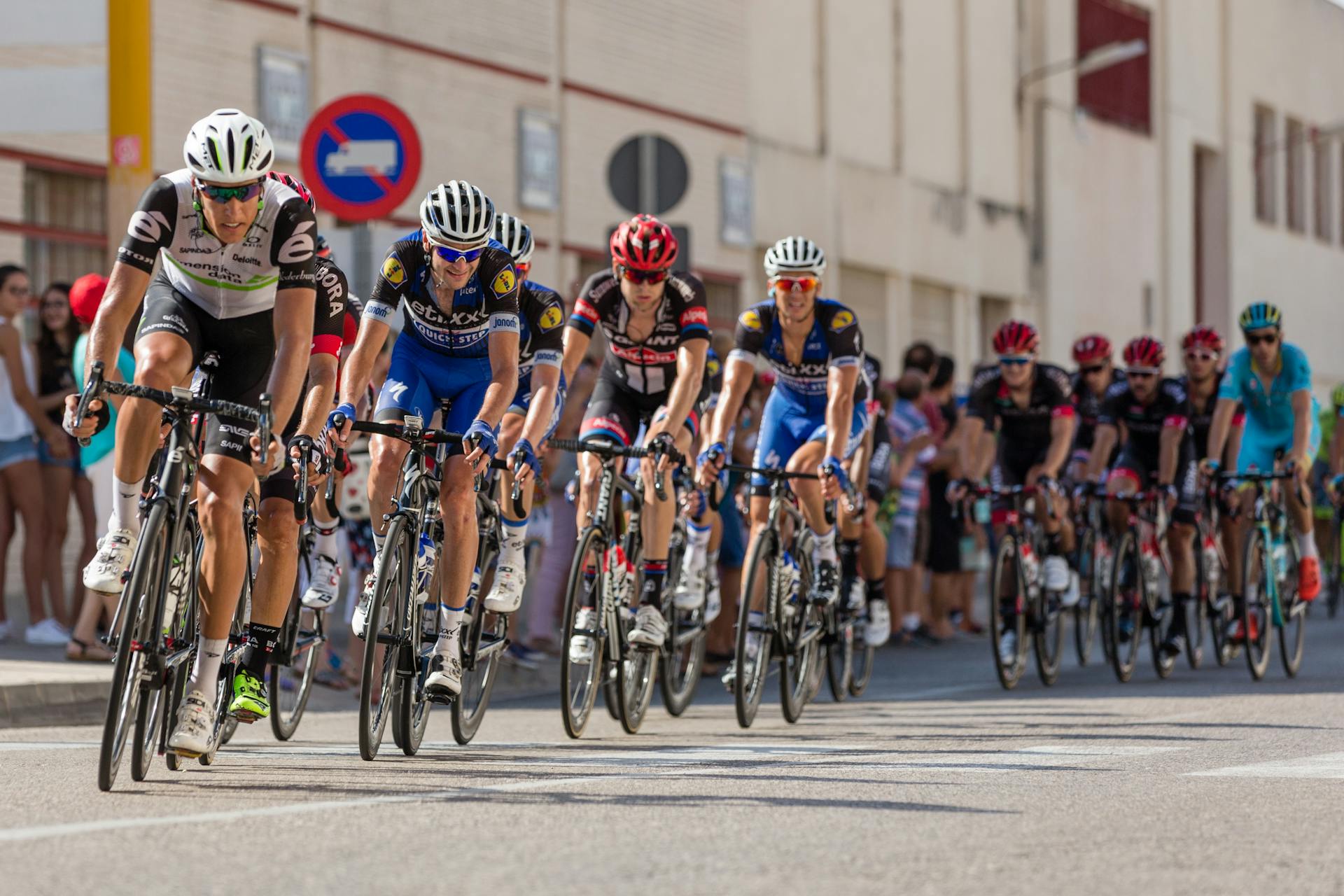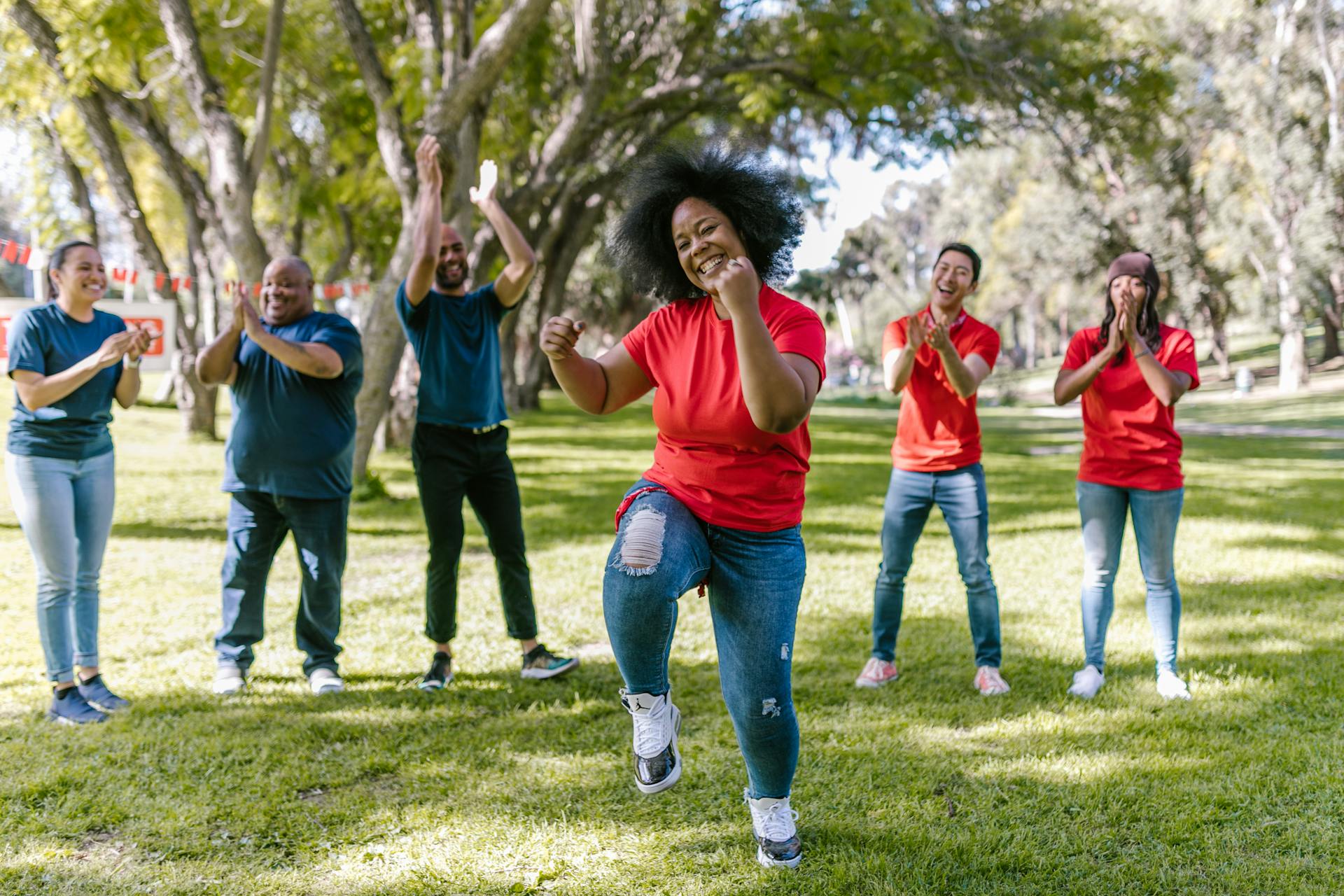
Being a great marathon spectator is more than just showing up at the finish line with a sign and some noise makers. It takes skill, patience, and an understanding of what runners need to hear and see in those pivotal midrace moments. Whether you're there to cheer on a friend or family member or simply hoping to witness history being made, mastering the dos and don'ts can make all the difference in creating a memorable spectator experience.
Take it from American record holder Keira D'Amato, who recently set a historic feat at the Houston Marathon on January 16th. Her mantra "buzzsaw" echoed through the crowds as she clocked miles towards the finish line, but it was the major boost she received when her husband Anthony yelled out "you're killing it!" that helped her power through. This power word may seem small, but it meant the world to D'Amato in that moment. As runners world contributing writer Cindy Kuzma and her husband Matt Kuzma note in their book Marathon Spectator Guide, these small gestures mean runners don't feel alone in their journey.
But being a great marathon spectator also requires fans to be mindful of security checkpoints and avoid bringing any items that could pose safety risks for both runners and spectators alike. With the Austin Marathon coming up on February 20th, now is the perfect time to brush up on key ways to enhance runners' experience while also keeping everyone safe. The bottom line: spectators make a huge difference in not only how runners perform but also how they feel during one of the most grueling races out there.
Why Watching Alone is Not the Way: Don't Spectate Solo

Watching a marathon alone might sound like a good idea, but it's not. Trust us; you don't want to miss out on the excitement that comes with spectating at the biggest races. Cheer zones hard to miss and include hundreds of people, making it an unforgettable experience. Woods Leads Cheer Stations, and Nike Run Clubs Cheer Zone are some of the best places you'd want to be if you're looking for a great time.
Cheering at mile 21 of the New York City Marathon helps create an adrenaline-fueled atmosphere that reminds runners they're not alone. Blasting music, DJ confetti cannons whistles, bringing noise makers, and holding handmade signs are just some of the ways spectators can show their support. With so many cheer zones to find dozens of opportunities for race day fun.
If you're worried about getting lost or missing your favorite runners during the race, download a person track in advance. This feature helps make race day easier by showing you where runners are on the course in real-time! So take photos and hold up a handmade sign or confetti cannon when your runner passes by because watching alone is not as much fun as cheering them on!
Boost Productivity by Avoiding Demotivation and Distractions

As a great marathon spectator, it's important to understand what motivates and demotivates runners. Runners feel good when they're making progress towards the finish line. When they get wrong information or distractions that take them off course, it can be frustrating and confusing.
To avoid demotivating runners, be sure to give them the correct distance and mile marker information. Spectators who provide wrong information can make finishing the race much more difficult for runners. By reserving your comments for encouraging remarks, you can help boost productivity and motivate runners to keep going until they reach the finish line.
Distractions are another factor that can slow down marathon runners. As a spectator, it's important to stay focused on supporting the runners without distracting them with the wrong things. By avoiding distractions such as flashing cameras or loud cheering at the wrong times, you can help keep marathon runners motivated and on track towards their goals. So next time you're watching a marathon, remember to reserve your left for the finish line and provide accurate information along the way!
Plan Your Route and Locate Cheer Stations in Advance

If you're planning on being a great marathon spectator, it's important to have a game plan. Jes Woods, Nike Run Club Coach, suggests using the "Race Day Download" feature on the Chicago Marathon website to get a sense of where your runner will be at any given time. Once you know your runner's pace and approximate arrival times, pick out cheer spots and plan your route accordingly.
It's also helpful to drop pins on a map of the course so you don't forget where you want to be. Mile 11 hopped up as a good spot for spectating locations, while mile 15 is known as a big hill that can be tough for runners. Be mindful of where you're standing so you don't impede other spectators or block aid stations.
According to Race Damato, who advised runners in his article for Runner’s World back in 2012, picking cheer stations can make a huge difference in the mentality headspace of runners left Woods who's cheered many major marathons around the world agrees with him. If you're not familiar with the city or are unsure about transportation options, research the course ahead of time and use public transit like the Chicago Transit Authority to navigate around town. Just remember to keep an eye on which side of the street your runner will be running on – if they’re running northbound along Lake Shore Drive at mile marker 12 (just before McCormick Place), they'll be on your left-hand side; if they're southbound along Michigan Avenue near mile marker 26 (just before Roosevelt University), they'll be on your right-hand side. Spectating can be a super stressful day but with some pre-planning it can all fall into place!
Map Out Your Journey: A Guide to Planning Your Route
When it comes to being a great marathon spectator, one of the most important things you can do is plan out your journey ahead of time. This means taking into account road closures, public transportation options, and other factors that could affect your ability to get around on race day.
For big city marathons, public transportation is often the easiest way to get around. Many cities offer special marathon shuttle buses or trains that can take you from one part of the course to another without having to worry about driving or parking. However, it's important to check schedules and routes ahead of time so you don't miss any key moments of the race. If you do decide to drive, give yourself plenty of extra time for traffic and road closures – these events tend to attract large crowds and can cause major delays if you're not prepared!
Discover Your Perfect Running Companion

Are you planning on running a marathon soon? One of the most important factors to consider is picking the perfect running companion. This could be someone who motivates you when you’re feeling tired or helps pace you through crowded races.
If you’re looking for a great marathon spectator, look no further than someone wearing a purple shirt. These volunteers are usually stationed at cheering sections throughout the race course and can be easily spotted as they carry balloons or flags to help runners identify them from afar.
Having a supportive spectator can make all the difference during a long and grueling race. They can offer words of encouragement, hand out snacks or water, and even give high fives! So be sure to choose your running companion wisely and consider bringing along a purple-shirted cheerleader to help you cross that finish line.
Creating A Successful Finish-Line Plan: Your Key To Success!

As a great marathon spectator, you need to have a plan of action for when your runner crosses the finish line. The finish line area can be chaotic and crowded, so it's important to know where you're going and what you'll be doing once you get there. Make sure to familiarize yourself with the layout of the finish line and designated spots for spectators to gather. This will help you avoid getting lost or separated from your group.
Once your runner has crossed the finish line, it's time to head to the family reunion area. Make sure everyone in your group knows where this is located so that you can all meet up easily. The family reunion area makes it easy for runners and their loved ones to find each other in the sea of people, so take advantage of this convenience. With a successful finish-line plan in place, you'll be able to celebrate your runner's accomplishment without any stress or confusion.
Anticipate Their Speed: How to Stay Ahead of the Game

When it comes to being a great marathon spectator, one of the most important things you can do is anticipate the speed of your family member or friend. Before the race even begins, find out their projected pace and use that information to plan where you will be standing along the route. By doing this, you'll be able to see them at multiple points throughout the race and offer encouragement when they need it most.
It's also important to remember that big marathons can be overwhelming for both runners and spectators alike. To ensure you don't miss your loved one as they pass by, plan to arrive at least 20 minutes before their predicted viewing times. This will give you plenty of time to navigate through crowds and find a good spot near the mile ahead of their anticipated arrival time. With these tips in mind, you'll be well on your way to being a great marathon spectator and supporting your loved ones every step of their marathon time from start line to finish line!
Frequently Asked Questions
How do you keep runners motivated at the finish line?
One effective way to keep runners motivated at the finish line is by cheering them on and congratulating them for their accomplishment. Another option is to provide incentives, such as medals or refreshments, to give runners a sense of pride and reward for their hard work.
How do you get around a marathon race?
To get around a marathon race, you need to train by gradually increasing your mileage and incorporating speed work. On race day, pace yourself and stay hydrated by drinking water at aid stations along the course.
Do marathoners need spectators?
Marathoners do not necessarily need spectators, but having them can provide motivation and support throughout the race.
How do you tell a marathon runner to go faster?
Encourage the runner with positive reinforcement, such as "you're doing great, keep pushing yourself!" or "you've got this, just a little further to go!" Avoid negative language or criticism.
How do I show my support for a marathoner?
You can show support for a marathoner by cheering them on along the race route, creating encouraging signs, or volunteering at aid stations.
Featured Images: pexels.com


